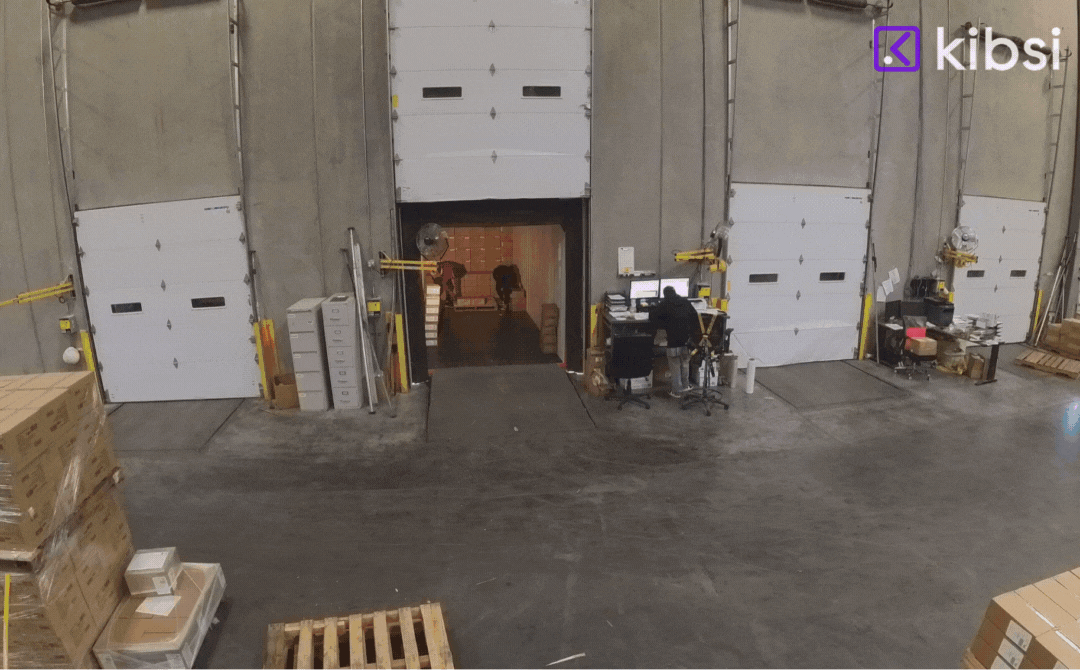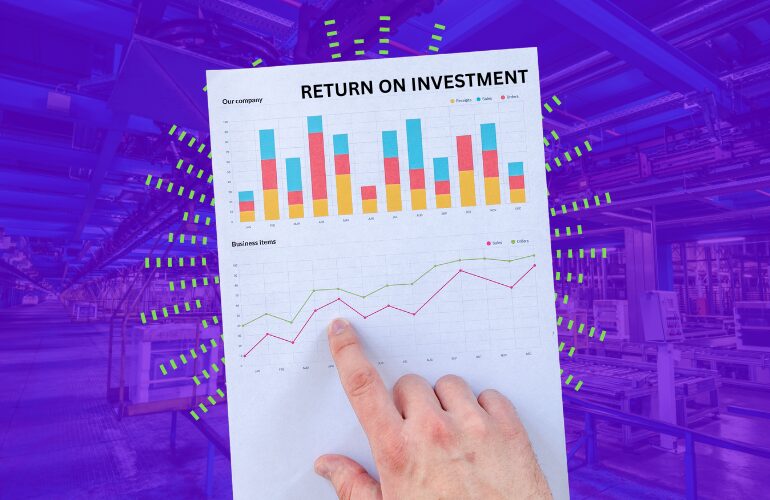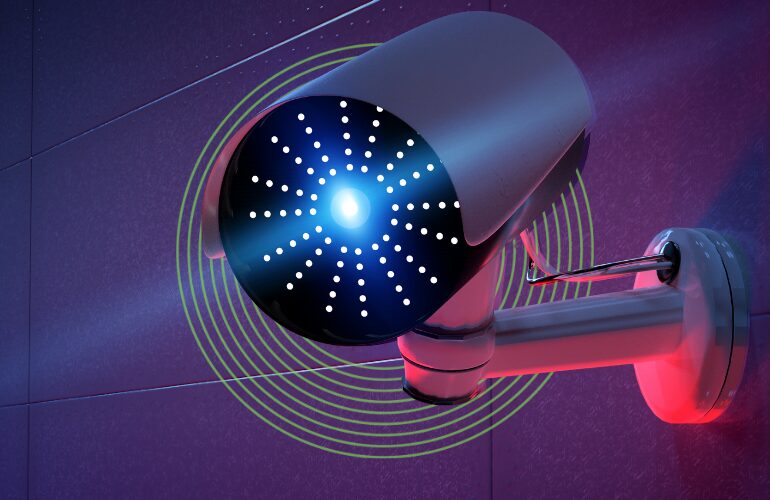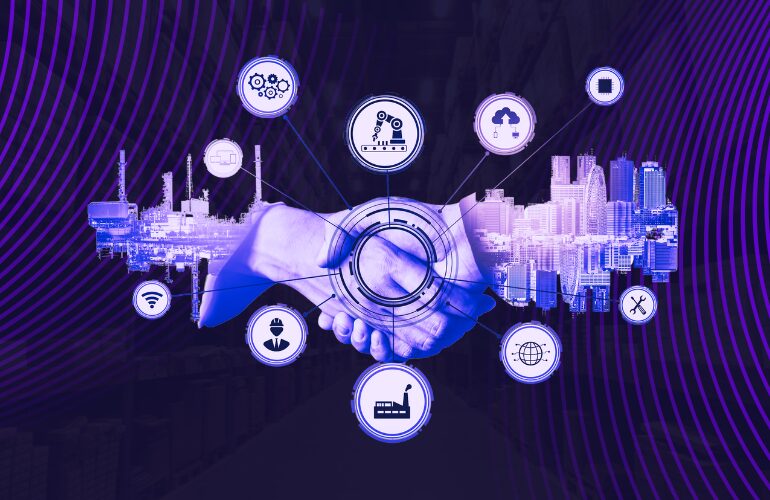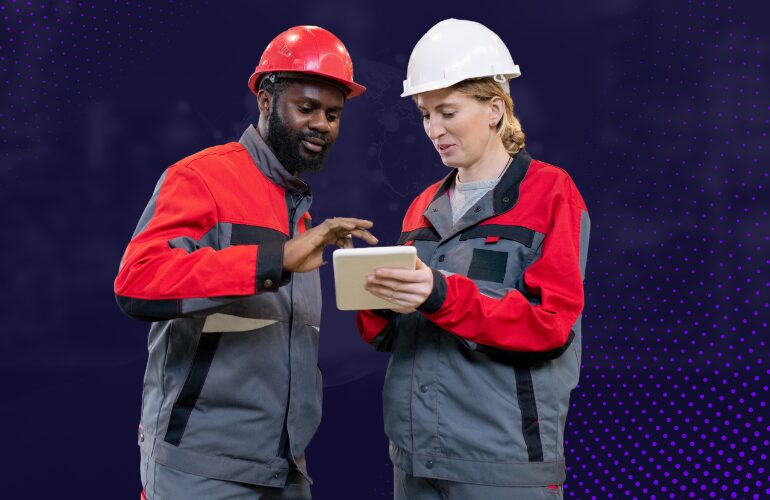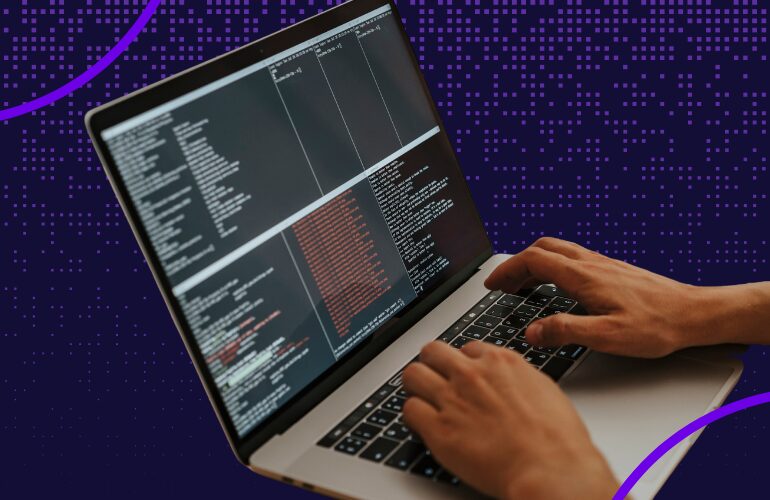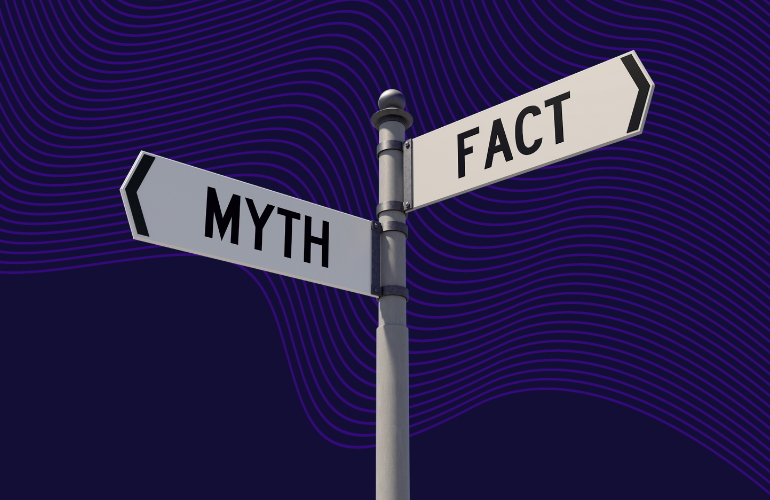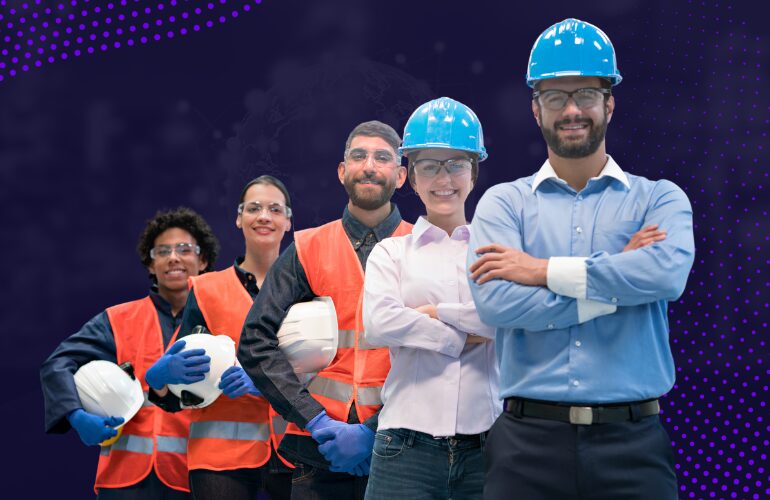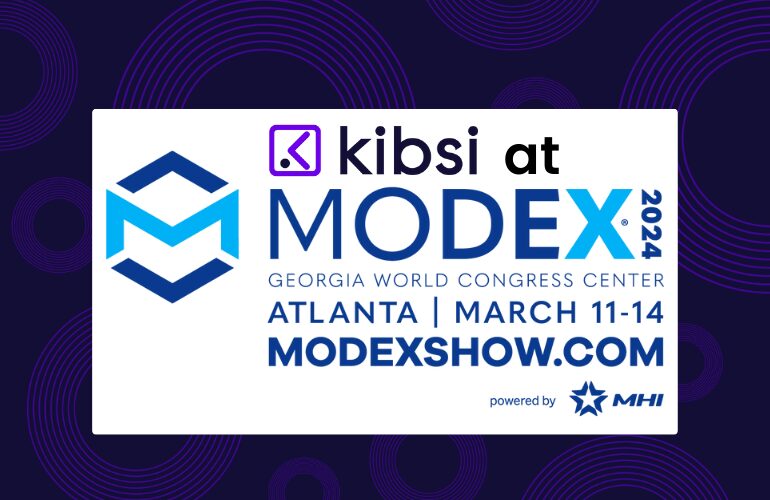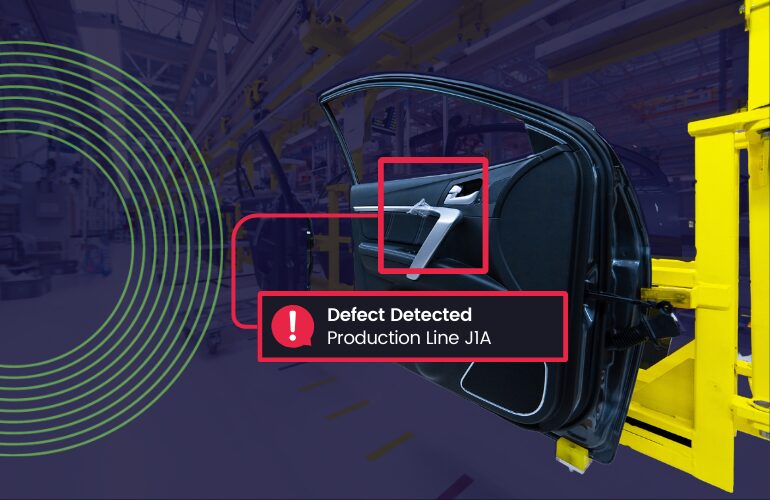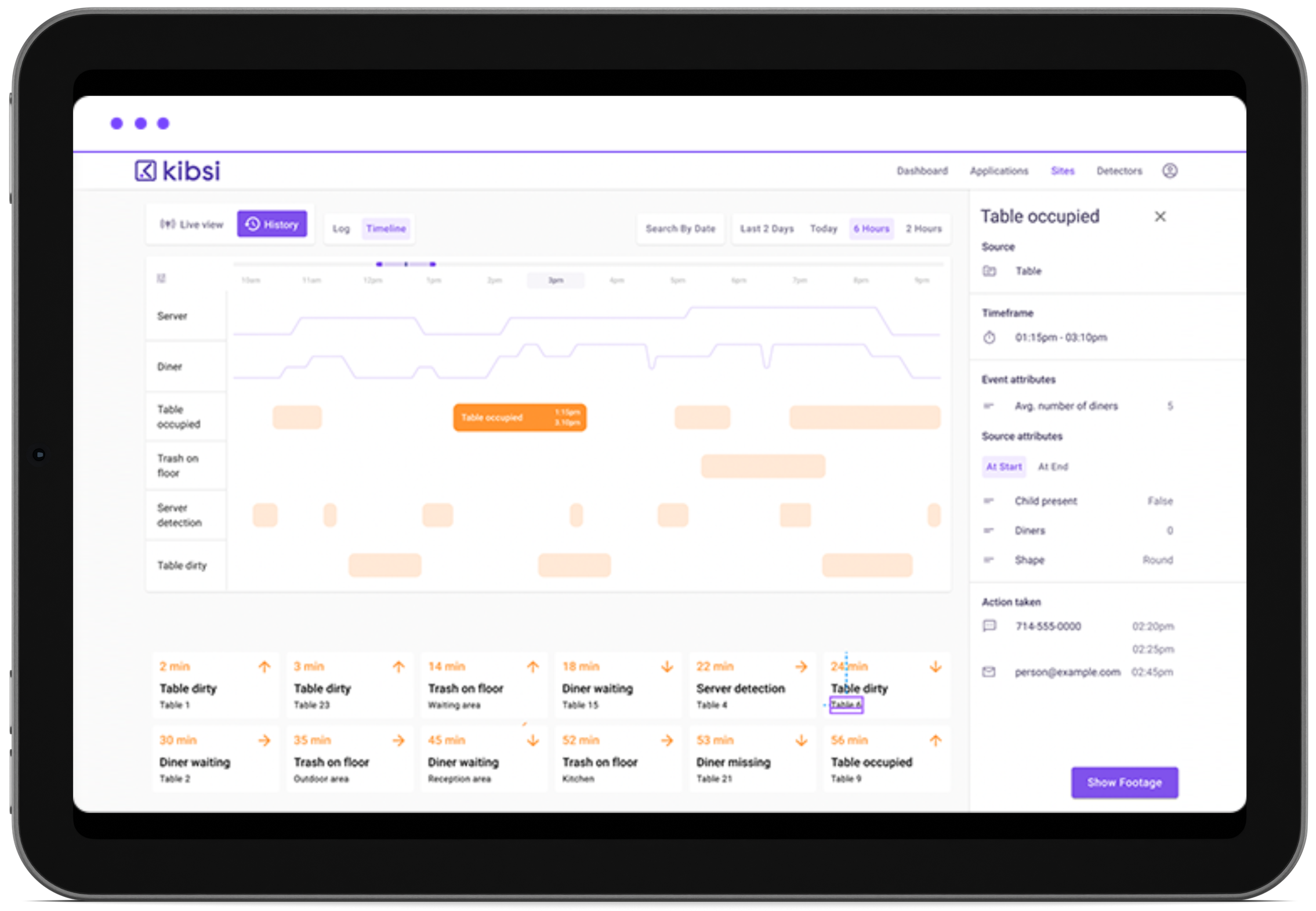AI COMPUTER VISION SOLUTION
Maximize forklift safety with computer vision
Get a safer industrial environment with real-time monitoring using AI + computer vision
Table of Contents
Using Computer Vision for Forklift Safety
What is Forklift Safety?
Understanding forklift safety and its impact
Forklift safety is critical in any workplace that relies on these powerful machines. It’s about more than following guidelines; it’s about building a safety-first mindset where the right practices are second nature. The training of operators, smart planning of vehicle paths, and clear safety signals are all part of keeping people and cargo safe.
Safety issues with forklifts range from handling and stability concerns to the risk of collision in tight spaces. Quick attention to these matters is key because the cost of accidents is heavy both in human and financial terms. Accidents can mean lost workdays, damaged goods, and legal troubles, all eating into a company’s bottom line.
Keeping forklift operations safe is fundamental for smooth business running. On top of meeting legal safety standards, it helps to keep work going without costly interruptions, making it a smart move for any operation.
How do AI and computer vision improve forklift safety?
Technology that cuts costs and improves safety
The integration of AI and Computer Vision into forklift operations ushers in a new era of safety and efficiency. By harnessing the power of these technologies, facilities can revolutionize how they monitor and manage forklift activities, leading to a significant decrease in workplace incidents and an increase in return on investment (ROI).
Here’s how AI and Computer Vision are making a difference in forklift safety:
Real-time monitoring
Cameras and sensors provide continuous observation of forklift operations, capturing every movement and action as they happen.
Automated alerts
When a potential safety breach is detected, such as a forklift nearing a restricted area or an unstable load, the system instantly notifies the relevant personnel.
Predictive analytics
By analyzing data patterns, AI can predict potential risks and suggest changes to prevent accidents before they occur.
Enhanced visibility
Even in visually challenging environments, Computer Vision can track and monitor forklifts, ensuring that nothing goes unnoticed.
These proactive measures not only safeguard employees but also contribute to a leaner operation by minimizing downtime and associated costs. The data collected through AI and Computer Vision can drive strategic decisions that optimize workflows, leading to a more productive and cost-effective business.
Businesses investing in these advanced safety systems are finding that the benefits extend beyond a safe workplace to include substantial cost savings, improved productivity, and an enhanced overall ROI.
What are industries that can benefit from AI and computer vision advancements in forklift safety?
A singular solution for an array of industries
The advancements in AI and Computer Vision for forklift safety are not confined to a single sector; they span a diverse array of industries where the streamlining of logistics and material handling is crucial. These forward-looking technologies offer a universal solution to common yet critical challenges across various sectors.
Industries reaping the benefits include:
Manufacturing
Streamlining production lines with better material handling and reducing the risk of equipment interference.
Warehousing and Distribution
Enhancing efficiency in inventory management and ensuring the safety of workers in high-traffic areas.
Construction
Improving the coordination of heavy lifts and supplies movement in dynamic and often changing environments.
Retail
Managing stock in backrooms and distribution centers with greater precision, especially during peak shopping seasons.
Transportation and Logistics
Optimizing the loading and unloading processes, crucial for maintaining tight delivery schedules.
Food and Beverage
Ensuring hygiene standards by minimizing human contact with products during movement and storage.
In each of these sectors, AI and Computer Vision software bring a suite of benefits that go beyond safety. Real-time data and analytics can lead to smarter decision-making, increased productivity, and a noticeable reduction in costs related to accidents and inefficiencies.
By preventing delays and ensuring consistent operations, AI-driven forklift safety solutions are proving to be an indispensable tool in the quest for a competitive edge and improved ROI.
How does Kibsi help with forklift safety?
Simplicity meets capability in a robust computer vision platform
At Kibsi, we understand the importance of keeping forklift operations safe and efficient. That’s why our Forklift Safety Suite, a ready-to-go Instant App, is crafted to blend into your current workflow with ease, giving you powerful tools to prevent accidents and boost productivity.
Here’s what Kibsi delivers:
- Smart Safety: Our AI gets ahead of potential dangers by alerting you early, so you can prevent incidents before they happen.
- Insightful Data: Turn live video into useful information that helps tighten up your forklift operations.
- Tailored Alerts: Set up the system to watch for what matters most to you, from tracking speed to making sure forklifts stay out of areas they shouldn’t be.
Getting started with Kibsi’s Forklift Safety Suite is a breeze:
Connect cameras

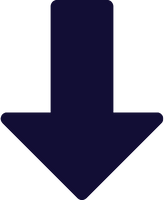
Select trigger & monitor options


Map Monitoring Area


Adjust monitoring rules


Select output
Frequently Asked Questions (FAQs)
Quick answers to common questions
AI and Computer Vision systems like Kibsi’s provide real-time monitoring and automated alerts that traditional measures cannot offer, resulting in quicker response times and proactive hazard prevention.
Absolutely. Our platform is designed to work seamlessly with your current camera infrastructure, simplifying the transition to advanced safety monitoring.
By reducing the number and severity of forklift-related accidents, Kibsi’s solutions can lower related costs, such as insurance premiums and legal fees, while increasing productivity through enhanced safety.
Kibsi’s Forklift Safety Suite is equipped to handle various safety concerns, including speed regulation, load stability, restricted area breaches, and near-miss detections.
No, these technologies are designed to assist and enhance human oversight, not replace it. They provide additional layers of safety and allow for human supervisors to focus on more critical tasks.
Predictive analytics use historical data to forecast potential future incidents, allowing for preemptive action to avoid unsafe situations.
Kibsi prioritizes privacy and complies with all relevant regulations. Our systems focus on vehicle and safety monitoring rather than individual tracking.
Yes, Kibsi offers customizable monitoring rules and alerts to fit the specific needs of your operation.
Our Instant App is designed for ease of use, with a straightforward setup process and user-friendly interface to ensure quick adoption and minimal training.
The suite provides actionable insights that can be used to refine operational procedures, reducing bottlenecks and promoting more efficient material handling.
How Does Kibsi Work in Your World?
Kibsi is designed to flex to your needs, offering real-time alerts, easy customization, and seamless API integration. Whether it’s tracking freight, monitoring manufacturing or keeping queues moving for concessions, Kibsi turns your video feeds into actionable insights. Intrigued? There’s a lot more to explore.
Hot off the Press: Articles and News
I. Introduction The interest in AI technologies, particularly computer vision (CV), has skyrocketed in recent years. Companies in manufacturing, supply chain, and logistics are eager to explore AI’s potential to transform their operations. According to …
Security cameras have been a fixture in manufacturing plants, warehouses, and distribution centers for years, diligently watching over operations to prevent theft and ensure safety. But as technology has advanced, these once-passive sentinels have evolved …
Introduction In recent years, the manufacturing industry has been undergoing a significant transformation, driven by the rapid advancement of technology and the growing demand for more efficient, sustainable, and human-centric production processes. As we move …
In a recent survey conducted by Kibsi, an astonishing 91% of manufacturing and supply chain professionals expressed their belief that AI will have a notable impact on their industries and, of those, 67% expect that …
When it comes to industries like manufacturing, supply chain, and logistics, computer vision technology is revolutionizing operations by enabling automated systems to interpret and act on visual data. As these industries face increasing demands for …
Is AI a revolution or a fad for traditional industries? Artificial intelligence (AI), particularly computer vision, is creating a stir in manufacturing and logistics. While some leaders are enthusiastic about its potential to streamline operations …
Navigating the ever-expanding web of regulations can feel like running an obstacle course blindfolded. Regulatory compliance across industries – from food and beverage manufacturing to pharmaceuticals and automotive – has become a critical but often …
The specter of automation replacing human jobs has haunted the manufacturing and logistics industries for decades. With the rise of artificial intelligence (AI) and, particularly, computer vision, these concerns have reached a fever pitch. However, …
The countdown to MODEX 2024 is on, and the excitement at Kibsi is palpable! This year, we’re not just attending; we’re showcasing our innovative no-code computer vision platform at Booth #A9911 in Building A. It’s …
The Defect in Defects in Manufacturing Defects in manufacturing can be a costly affair, affecting everything from production efficiency to brand reputation. The ripple effect of undetected defects extends throughout the supply chain, ultimately impacting …


